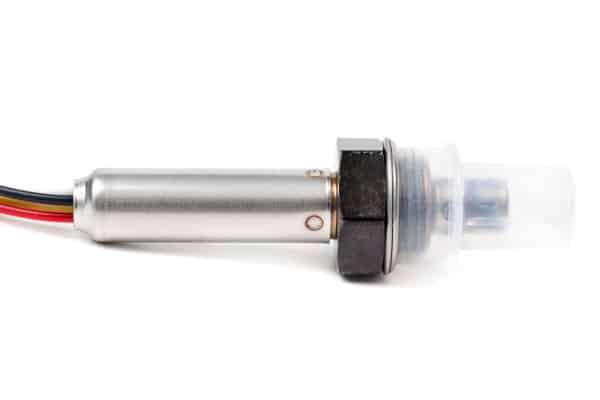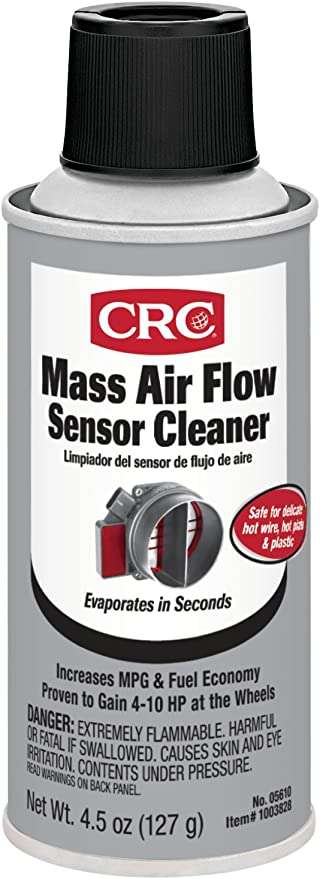Last Updated on June 19, 2023 by Chase Manhattan
Dive into the world of DIY automotive fixes with a task that’s both simple and significant – cleaning your O2 sensor, also known as an oxygen sensor. Many car enthusiasts might not realize that a grimy O2 sensor can cause your vehicle to run less efficiently, increasing fuel consumption and potentially leading to more serious issues down the line. But fear not! With a bit of time, patience and the right tools, you can tackle this task yourself and keep your car running smoothly. In this guide, we’re going to walk you through the process of cleaning an O2 sensor for the first time. So fasten your seatbelts, roll up your sleeves, and let’s get your engine humming the way it should!
vetted by:
- How to Clean Car Carpets Quickly (Without An Extractor) - July 10, 2024
- Can You Touch Up Clear Coat On A Car? Yes and No (Here’s Why) - November 25, 2023
- How To Wax A Car By Hand (For Beginners) - November 14, 2023
As a crucial component in a vehicle’s emissions control system, the oxygen sensor, or O2 sensor, measures the oxygen levels in the exhaust gas to ensure that the engine is running efficiently and not producing excessive emissions. However, over time, the sensor can become contaminated with buildup and debris, causing it to malfunction and negatively impact fuel efficiency and overall vehicle performance. This is why cleaning your O2 sensor can sometimes be a critical procedure.
So enough of the blabber-mouthing, keep reading and let’s get into what you’ll need throughout the process, and we’ll review a quick step-by-step together – which I’ll go into more detail about down the line.
Tools and Materials You’ll Need for the oxygen sensor cleaning process:
- A car jack
- Safety goggles and protective eyewear
- A plastic bowl
- A wire brush
- An aerosol cleaner
- Compressed air
- Gasoline
- A gasoline bucket
- An industrial container
- Hexagon shape O2 sensor removal tool
Step-by-Step Guide to Cleaning an O2 Sensor:
- Locate the oxygen sensor in your vehicle. Most cars have two to four sensors located on the exhaust manifold, exhaust pipe, and catalytic converter.
- Turn off the engine and let it cool down. Never attempt to remove or clean the O2 sensor while the engine is still hot.
- Use a car jack to raise your vehicle and locate the O2 sensor that needs cleaning. For most vehicles, the O2 sensor is located on the passenger side of the vehicle.
- Remove the O2 sensor using a hexagon-shaped O2 sensor removal tool. You can find the exact locations of the o2 sensors in your vehicle’s owner’s manual.
- Soak the O2 sensor in a plastic bowl filled with gasoline overnight
In this guide, we’ll walk you through how to clean an O2 sensor to restore its functionality and improve your vehicle’s performance. This process can save you money in repairs and improve your fuel consumption, all while reducing your vehicle’s emissions.
[Why Driving With A Bad Purge Valve Is A Bad Idea]
What Happens When The Oxygen Sensor Is Dirty
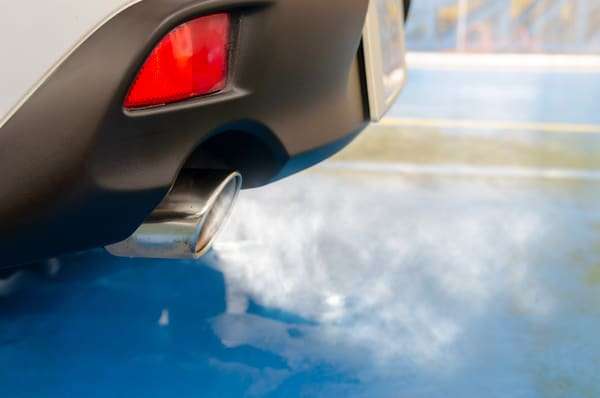
An oxygen sensor in your vehicle measures the level of oxygen in the engine to ensure optimal performance.
Part of the emission system monitors the emissions from your car by maintaining a healthy fuel and air ratio.
With a bad sensor, there will be no way to measure and maintain that ratio. Nevertheless, cars lose fuel efficiency with a bad oxygen sensor.
A car’s engine running on a ratio of excessive air and less fuel is said to have a lean mixture.
This mixture yields nitrogen-oxide pollutants that hinder acceleration and may damage the engine. If the car’s engine is running on excessive fuel with less air ratio, it is said to have a gas rich mixture. A rich mixture causes your vehicle to pollute the air and heat up too quickly. This excess head can also cause damage to your exhaust system, and your catalytic converter specifically.
[Location of The EVAP Canister Purge Valve]
[monsterinsights_popular_posts_inline]
How Do Oxygen Sensors Get Dirty
Since oxygen sensors are integrated into the exhaust system of your vehicles, they are prone to getting dirty.
Toxic gases including Carbon Monoxide (CO), Hydrocarbon (HC), Nitrogen Dioxide (NO2), and fuel contaminate the sensor and impact its performance. Since oxygen sensors are located upstream of the catalytic converter, they receive the full brunt of the unfiltered exhaust gases.

Signs of A Bad Oxygen Sensor
A defective oxygen sensor will cause a few problems:
- rough idling
- illuminated check engine light
- using more gasoline than usual
Rough Idling
A rough idle is a typical symptom of a bad oxygen sensor because the o2 sensors allow the car to determine how much oxygen is being fed into the combustion chamber so that it can moderate the flow of fuel from the fuel injectors that is being mixed with the air. If the car is unable to do this, your uneven combustion process will cause the car to idle unevenly – also known as a rough idle. Additionally, the gasoline can cause your spark plugs to wear prematurely, known as “fouling the plugs”.
Illuminated Check Engine Light
If you have a bad oxygen sensor your check engine light will illuminate; this is because your car’s computer monitors the electrical system for faults, this is why a faulty sensor will illuminate your check engine light because it is effectively “flipping the circuit open”.
Running Rich
As i mentioned briefly before, a bad oxygen sensor will cause your car to run rich, which is when there is an excess amount of fuel being consumed during the combustion process. This leads to premature wear of the car engine, excess heat being generated, and a reduced fuel efficiency.
[How To Bypass an EVAP Canister]
Where Are O2 Sensors Located?
In most modern applications, the O2 sensors are located in two distinct locations: “upstream” and “downstream”. These two locations refer to the relatively location of the catalytic converter. If the sensor is before the catalytic converter, it is “upstream”, if it is “downstream” it is located after the catalytic converter has filtered the exhaust gases.
Near The Catalytic Converter
The upstream O2 sensor will be found in the exhaust manifold (headers) before the catalytic converter. This location is used to measure the raw exhaust output of the engine before it is filtered.
Throughout The Exhaust System
The downstream O2 sensor will be located after the catalytic converter since it is used to measure the exhaust gases that will eventually leave the tailpipe.
How To Clean O2 Sensor
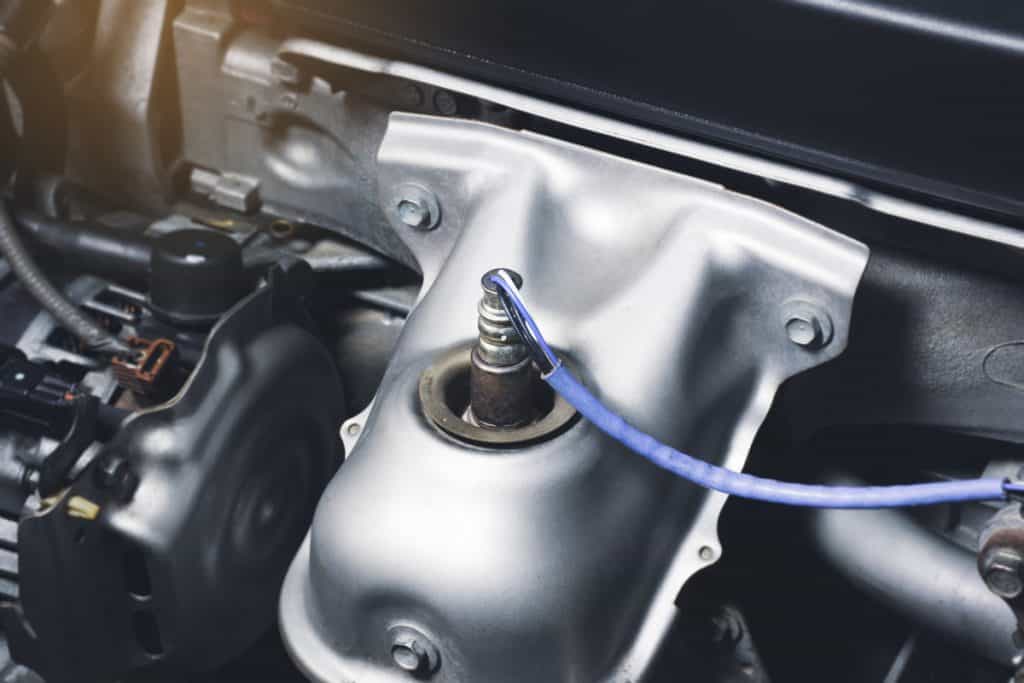
Before you start, you need to have all the needed equipment and tools to clean an oxygen sensor.
You don’t need many tools while cleaning an oxygen sensor, you just need to make sure that you are protected. Wear safety gloves and glasses while cleaning the oxygen sensor.
WD-40, gasoline, an industrial bucket, or some kind of industrial container will be required as well.
[How To Safely Clean Your Engine Bay]
Locate The O2 Sensors
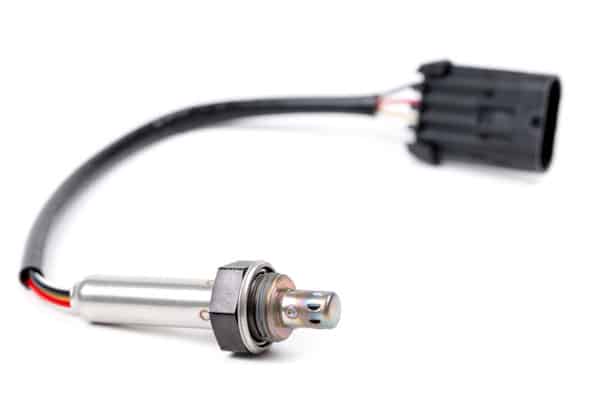
Depending on the car’s brand and model, it may have more than one O2 sensor. The location of these o2 sensors is different for each model. Consult with your manual to find the exact location of the sensor.
Most modern cars have sensors under part of the chassis. So, that’s probably where you will be looking. More specifically, along the exhaust pipe manifold – also known as the headers.
To find and remove the oxygen sensor sensor, lift the vehicle with a car jack. In order to remove the oxygen sensor, you will need to have access to the underside of your vehicle.
Make sure that the vehicle is on level ground, is in the park position and that the emergency brake is engaged before lifting the car.
Place the jack under part of your vehicle’s chassis (including an axis or the side of the car frame) and lift the vehicle.
Identify the oxygen sensor(s). Depending on the make and model of your vehicle, it may have more than one oxygen sensor.
Check your vehicle’s owner’s manual for the exact locations of the sensors.
All vehicles have at least two oxygen sensors: one in front of your car’s catalytic converter, and one in the car’s exhaust manifold. If your vehicle has more than one exhaust manifold, there will likely be an oxygen sensor inside each one.
[How To Clean A Catalytic Converter]
Remove The Sensor
- Spray the sensors with WD-40.
As your vehicle’s oxygen sensors are seldom removed, they will probably be firmly stuck in place. To loosen them, spray the sensors with a lubricant like WD-40 and let them sit for 10–15 minutes. The WD-40 will lubricate and loosen the sensors, making them easier to remove. - Unscrew the O2 sensors from the housing.
You’ll need to use a sturdy wrench for this. Each of the oxygen sensors should be well lubricated and loosened at this point; take your wrench and firmly loosen the sensors. - Place the sensors on a clean surface.
Place the sensors somewhere clean, don’t let dust particles get on them.
[How to Wax a Car with a Buffer]
Soaking The Oxygen Sensor
- Fill an industrial bucket with gasoline or catalytic converter cleaner.
Make sure the oxygen sensor is fully immersed in the gasoline or catalytic converter cleaner. - Place the sensor inside the bucket.
- Let it soak overnight.
- Let it dry
This is usually done in a workshop where you have shop towels nearby. If you don’t have them at home, make sure you order some online.
[How To Clean Purge Solenoid Valve]
Reinstall The Oxygen Sensors
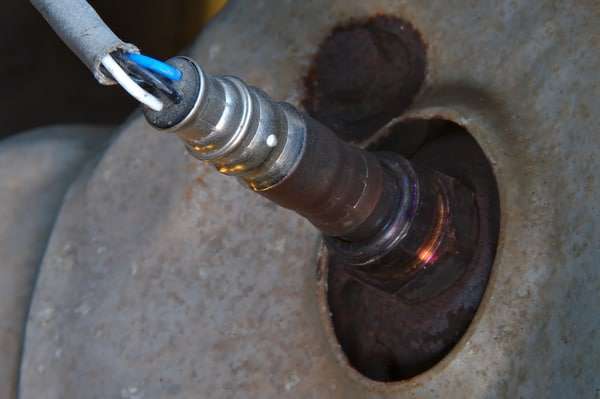
After you are done cleaning the sensors, reinstall them in the car. Once dry completely, of course.
It’s as simple as screwing them back in. It’s a good idea to consult with the manual again if you don’t know where to place them.
A better idea is to take a picture of the two sensors together before removing and replacing them. That way, you will have a picture that you can take a look at if you don’t remember what goes where.
If your check engine light is still on, maybe the sensors are faulty and not dirty.
[How to Fix a Rusty Exhaust Pipe]
Best Oxygen Sensor Cleaner
My personal favorite o2 sensor cleaner is the Mass Air Flow Sensor Cleaner (MAF) by CRC. It is designed for MAF sensors, which essentially function the same as O2 sensors just further up the “fuel stream” so you know that it won’t damage the sensor in any way.
Dirty O2 Sensor Symptoms
A dirty O2 sensor will directly effect the performance and reliability of your car. This presents itself in a few ways:
- an illuminated check engine light
- stuttering or misfiring
- stalling or difficulty starting
- poor gas mileage
- smell of raw fuel
- reduced engine performance
O2 Sensor Removal Tricks
If you’ve found that your O2 sensor is unwilling to budge, feel free to douse the area with WD40 or PB Blaster – just make sure that the car has cooled before doing so. Moving forward, it’s ok to add some high-temperature anti-seize grease to the threads so that it will not seize up next time you need to remove the sensor.
[How To Test A Purge Solenoid Valve]
Related Questions And Other FAQs
Can You Clean O2 Sensors?
Yes, you can clean O2 sensors instead of replacing them. Doing this requires some skill but if you have at least some experience, you will be able to the cleaning yourself.
How To Clean O2 Sensor Without Removing It?
You must remove an oxygen sensor if you want to clean it. There’s no way to clean the sensor without removing it. It must be removed and soaked overnight in gasoline, and fully dried before reinstalling the sensor. Otherwise, some people attempt to use a fuel additive to clean their in-stream exhaust sensors.
Can I Use WD40 To Remove O2 Sensors?
Yes, WD40 is perfectly safe when removing O2 sensors. The WD40 will loosen any carbon deposits that have built up on the threads of the sensors allowing for easy removal and installation.
Can You Drive Without an O2 Sensor?
Yes, you can drive without an O2 sensor but you may experience negative consequences in the form of performance issues. These issues can range from a misfire, to stalling, a check engine light, and reduced fuel economy.
Will An Oxygen Sensor Stop a Car From Running?
In extreme cases, an oxygen sensor will stop a car from running. This is because the O2 sensors act as a meter to gauge the air/fuel ratio of the car. When this ratio is severely out of balance the car will struggle to stay running.

